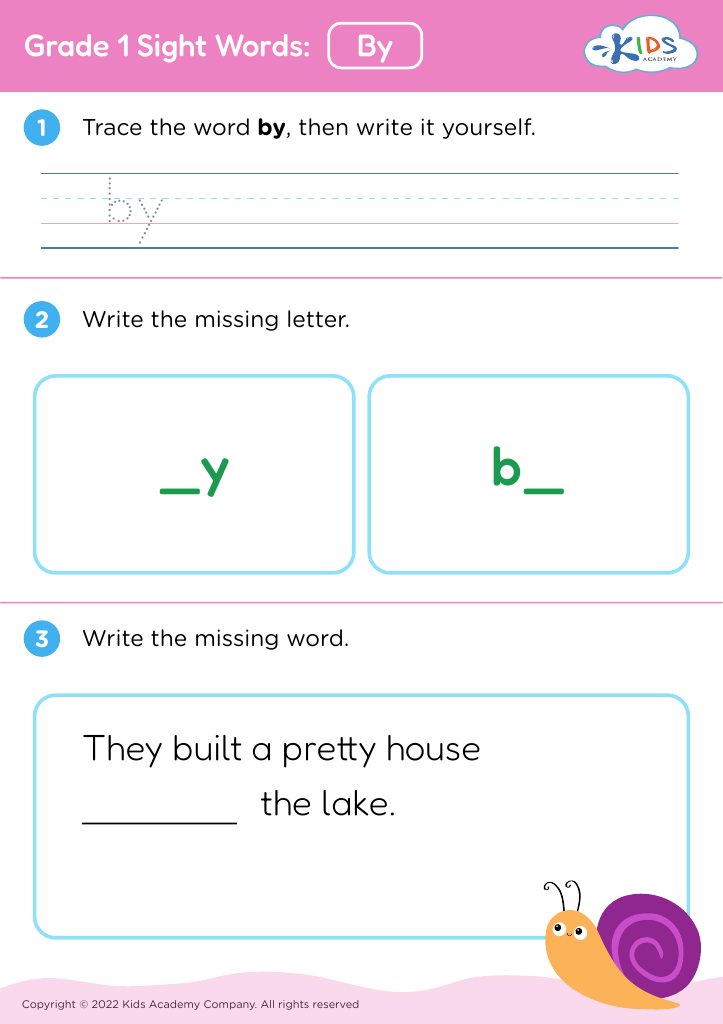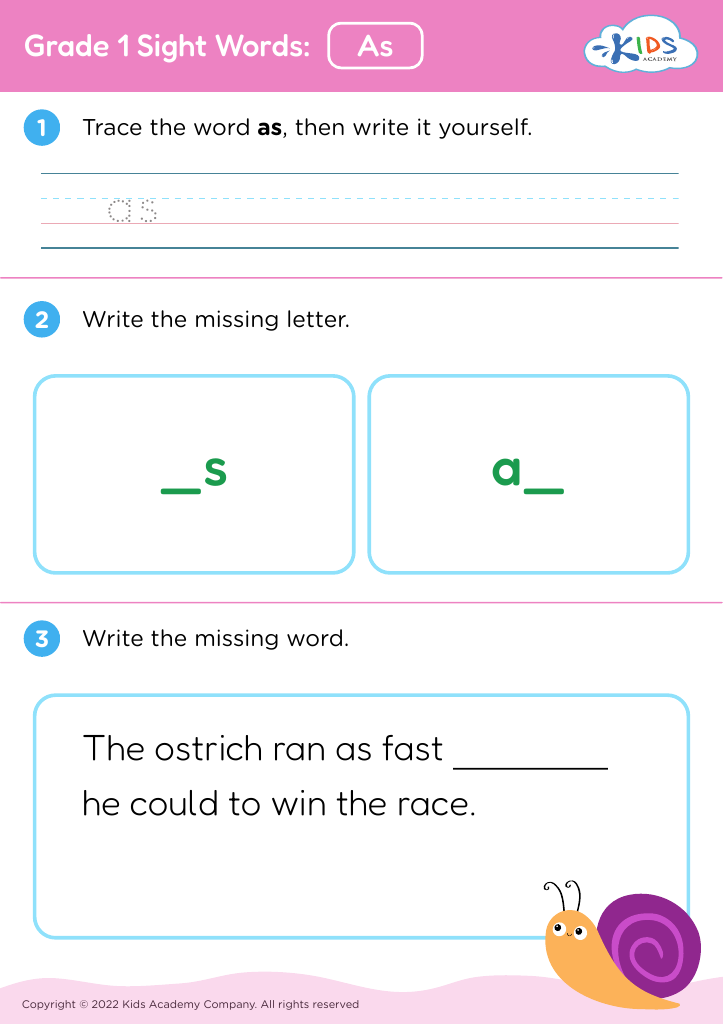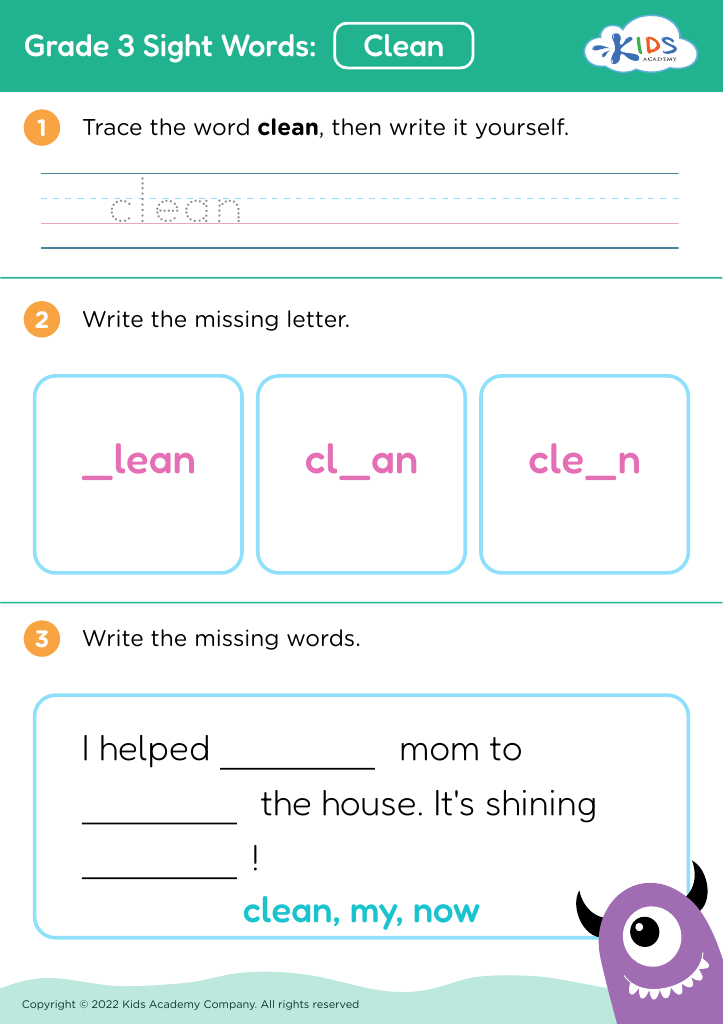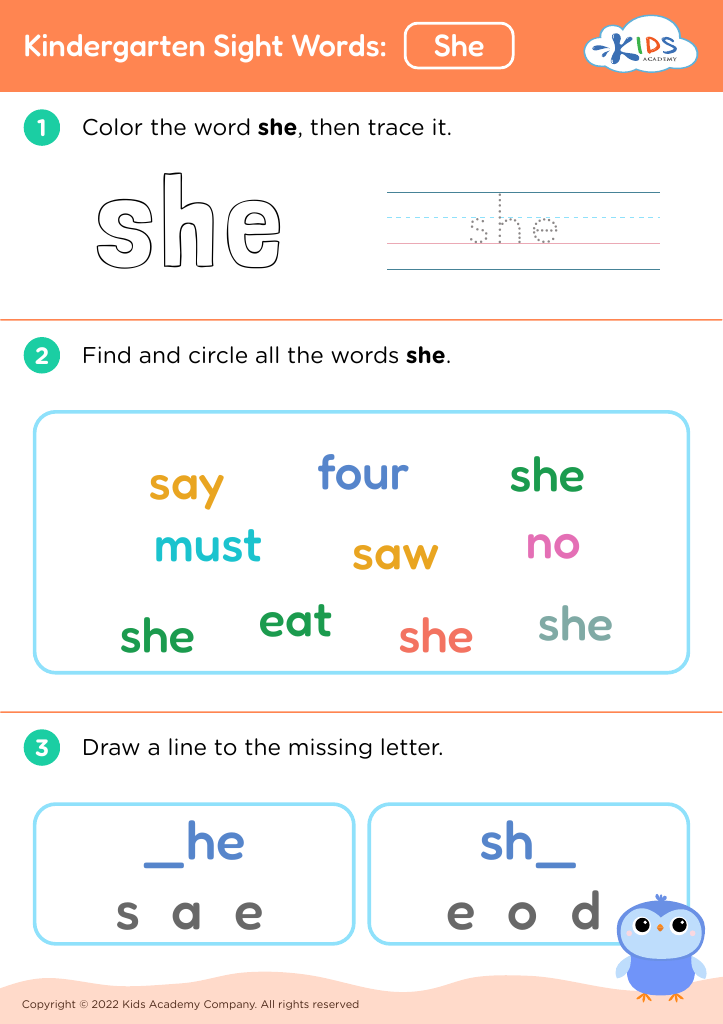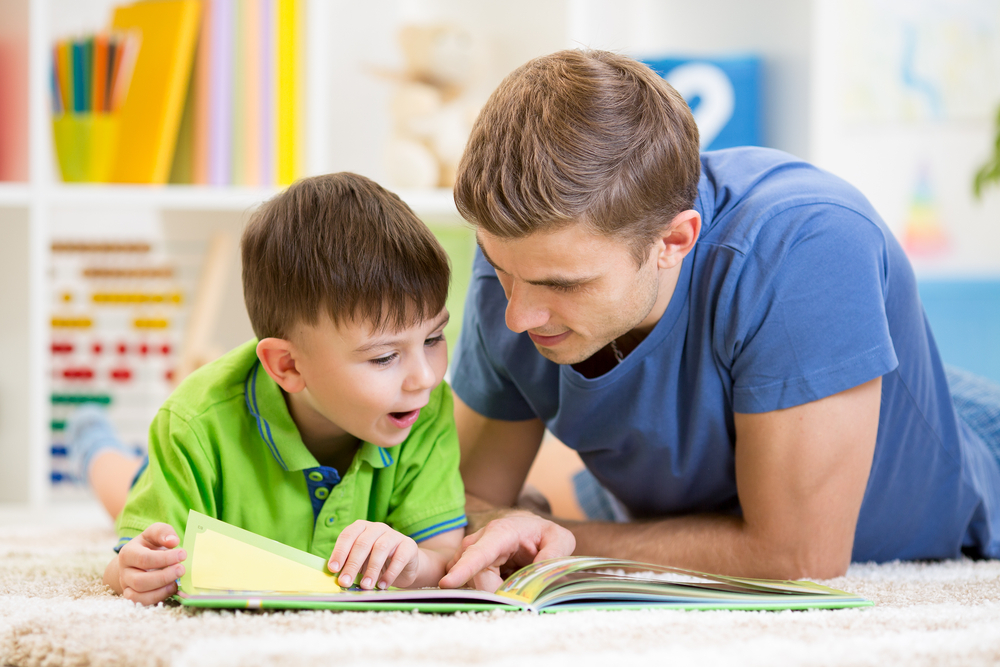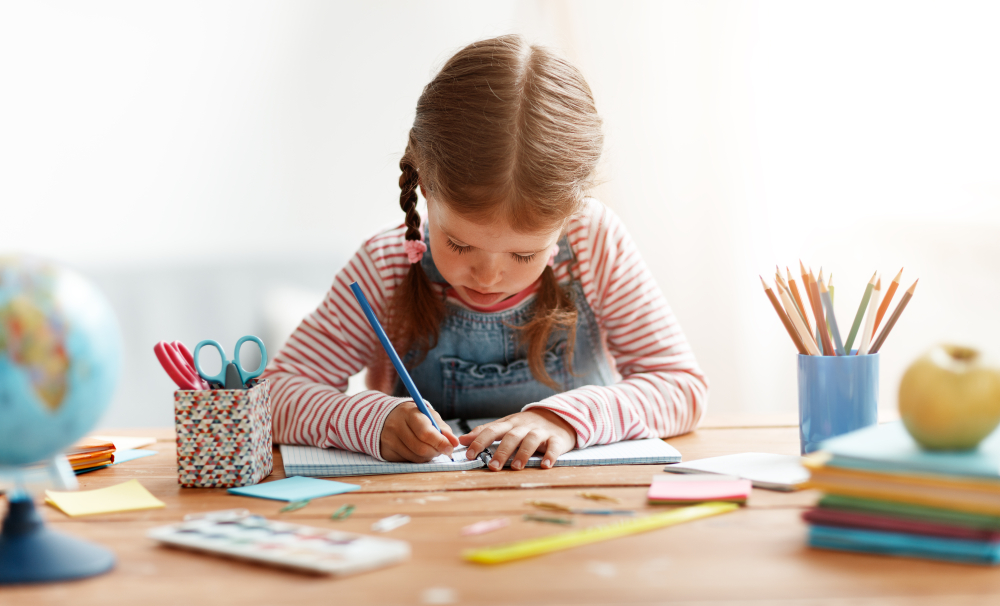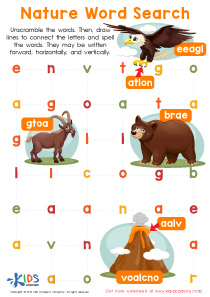Understanding symmetry Sight Words Worksheets for Ages 4-9
5 filtered results
-
From - To
Discover our engaging "Understanding Symmetry Sight Words Worksheets" designed for children ages 4-9! These easy-to-use resources help young learners grasp the concept of symmetry while enhancing their sight word vocabulary. Each worksheet combines fun activities with visual exercises, ensuring a captivating learning experience. Kids will identify and practice sight words through colorful illustrations that showcase symmetry in various forms, reinforcing both literacy and mathematical skills. Perfect for home or classroom use, these worksheets encourage critical thinking and creativity. Get started today and watch your child thrive in their reading and comprehension abilities while exploring the fascinating world of symmetry!
Understanding symmetry and sight words is essential for children ages 4-9 as it lays the foundation for critical cognitive skills and literacy development. Symmetry, a mathematical concept, helps children recognize patterns, shapes, and spatial relationships, encouraging analytical thinking essential for their problem-solving abilities. Engaging in symmetry activities practices pattern recognition and fine motor skills, crucial for later mathematical learning.
On the other hand, sight words represent the building blocks of reading. Familiarity with sight words enhances fluency and comprehension, making it easier for children to enjoy stories, follow along in texts, and build their vocabulary. The repetition of these words in various contexts boosts confidence, a key factor in fostering a lifelong love for reading.
When parents and teachers focus on teaching both symmetry and sight words, they create a holistic learning environment. Combining visual-spatial skills with language acquisition enriches children's understanding and provides diverse intellectual experiences. This multi-faceted approach not only promotes academic success but also nurtures curiosity and creativity, which are essential traits for lifelong learners. Ultimately, emphasizing these concepts can have lasting benefits in children's educational journeys and prepare them for future learning challenges.


